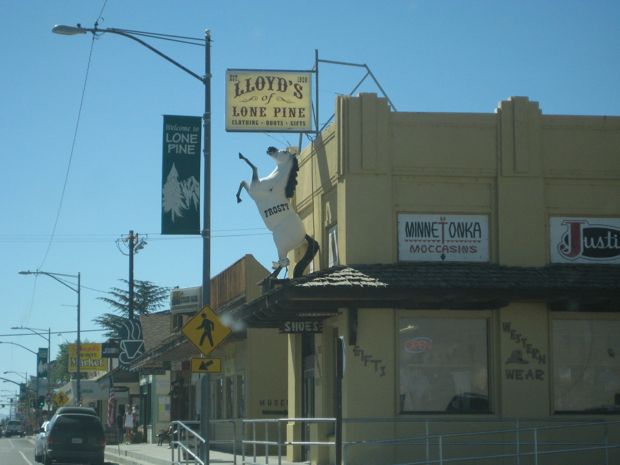
My nephew Harry and I, a couple of movie-mad kids at heart, made a pilgrimage last week to Lone Pine, California, to pay our respects to a location where scores of Westerns and other kinds of films have been shot over the years.
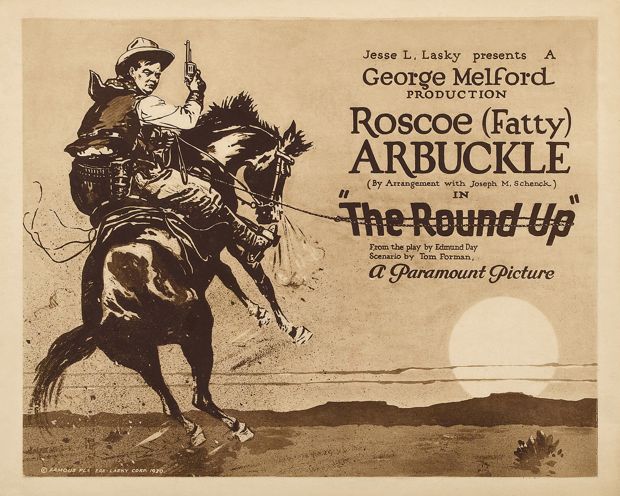
Fatty Arbuckle made The Round-Up there in the silent era (1920), and most of the exteriors of Gunga Din were shot there, incorporating some massive sets constructed in the Alabama Hills, in 1938.
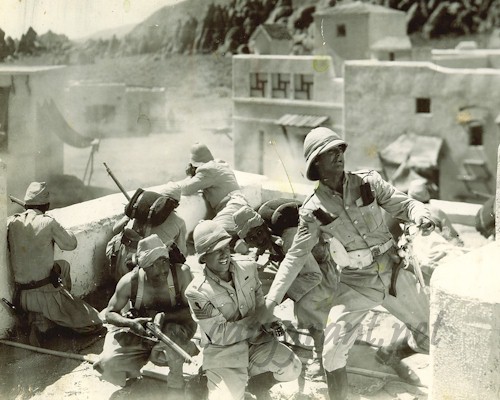
Many of the films in the Hopalong Cassidy series were made in and around Lone Pine . . .
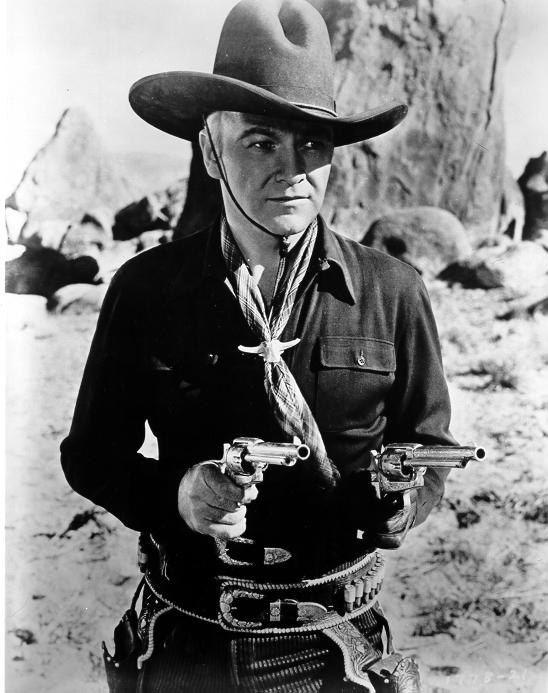
. . . and many of the Tim Holt Westerns, too.
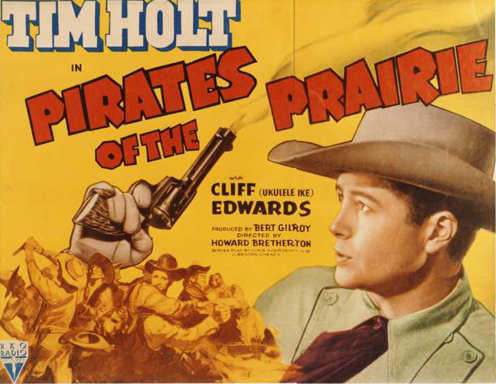
The films in both of those series are beautifully shot — they are B-Westerns with first-class cinematography and can be watched over and over again for the aesthetic pleasures of their images alone.
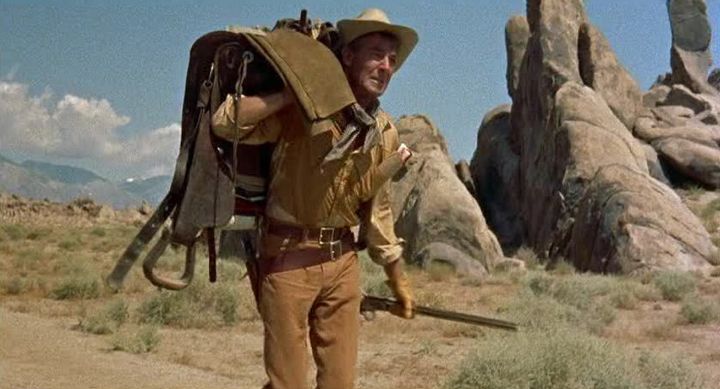
The greatest films shot in and around Lone Pine were the Randolph Scott-Budd Boetticher Westerns, including The Tall T (above), Ride Lonesome and Comanche Station (below), and these films have consecrated the locale for me. Lone Pine and the nearby Alabama Hills were for Boetticher what Monument Valley and Moab, Utah, were for John Ford. I wanted to move through that landscape and see the raw material from which Boetticher conjured his enchanted spaces.
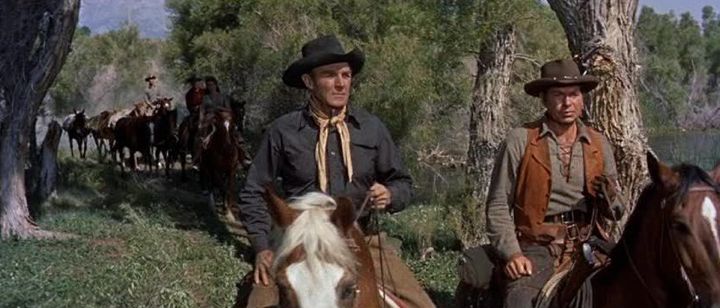
I was also doing a very preliminary location scout for a no-budget Western I'm working on, wondering if Lone Pine might be a place it could be made.
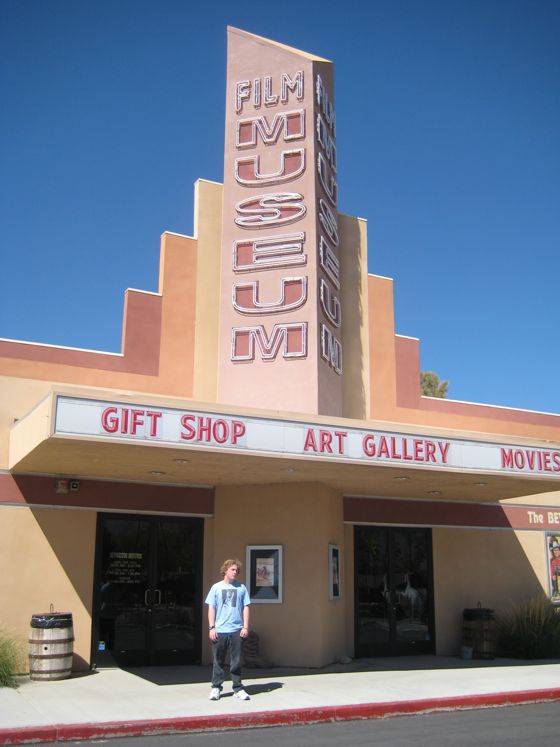
We started out our day at the excellent film museum in Lone Pine, which has an amazing collection of posters from the films shot in the area and a number of sublime artifacts — the most sublime of which was a cowboy hat worn by Barbara Stanwyck in a film made at Lone Pine. My heart skipped a little beat as I stood before it, thinking of the way that woman could sit a horse.
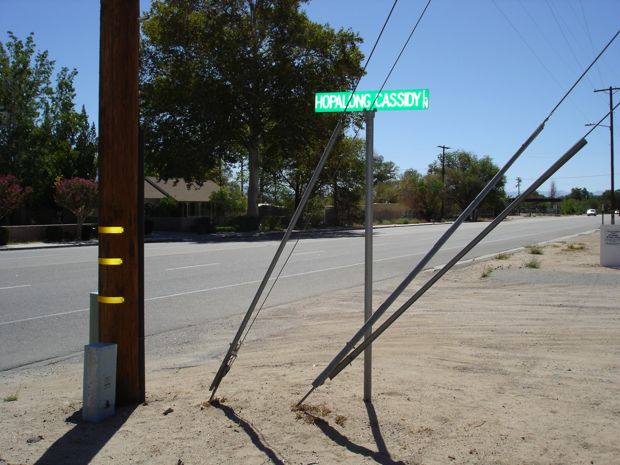
The lane above runs next to the museum.
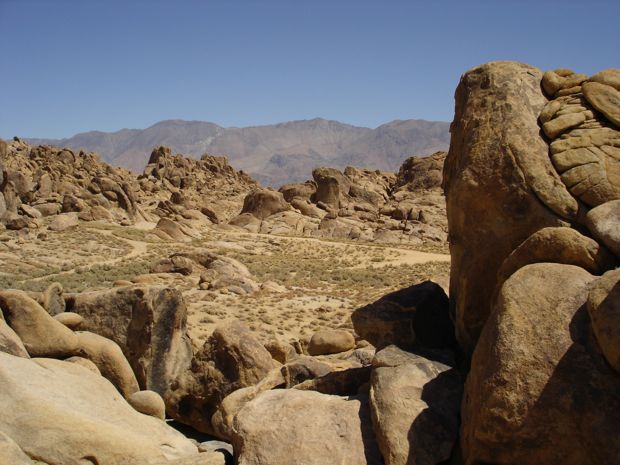
Like Monument Valley and the valley near Moab through which the Colorado River flows, Lone Pine has a lot of different-looking landscapes concentrated in a small area — which facilitates rapid company moves on a low-budget shoot. You can get a sense of numerous contrasting locations with minimal logistical complications.
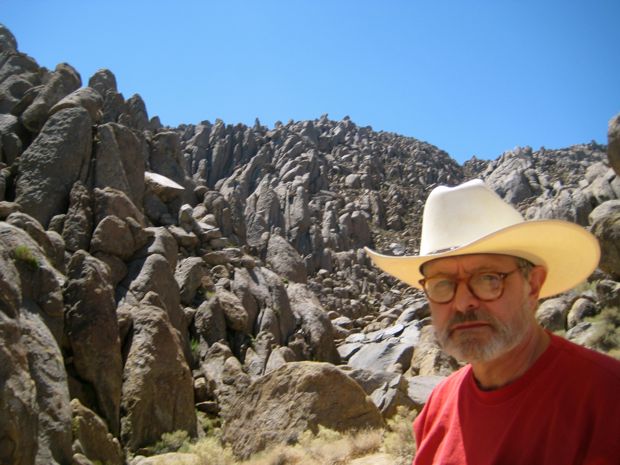
The Alabama Hills are a labyrinth of odd rock formations, passes and basins. Minutes away to the east the Owens River runs through shady groves and reeds — familiar from the beautiful river crossing scenes in the Boetticher films.
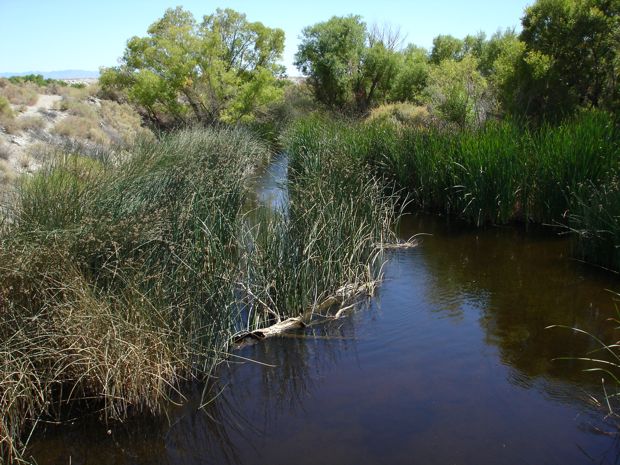
One of the glories of Lone Pine is the range of the Sierra Nevadas looming up to the west of the Alabama Hills.
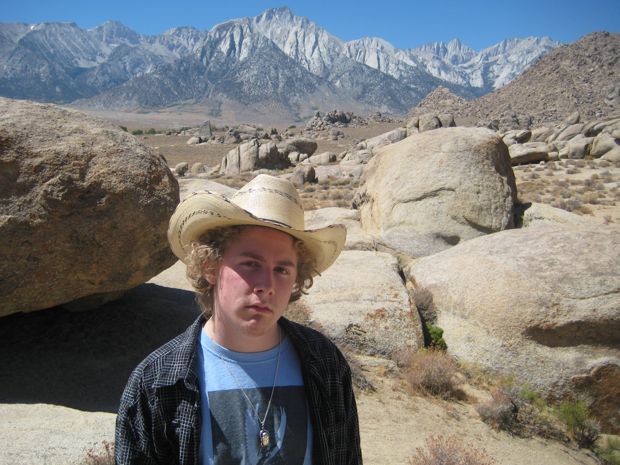
It makes for some spectacular scenery, but would be a problem for my film, which is set in North Texas, where such mountains do not exist. Working in the Alabama Hills or along the banks of the Owens, which could stand in quite well for Texas, one would be severely limited in the directions from which one could cover a scene, but it's probably a limitation one could live with.
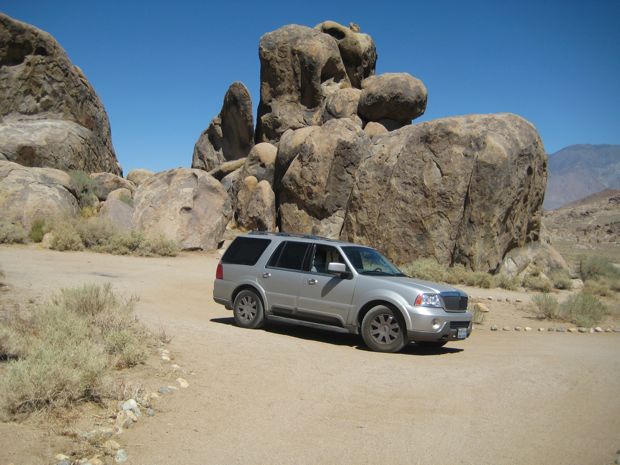
But that's a problem for another day. The day we spent in and around Lone Pine was magical — it's ground haunted by galloping ghost horses ridden by ghost cowboys, whose images live on, even in these degraded and ignoble times.
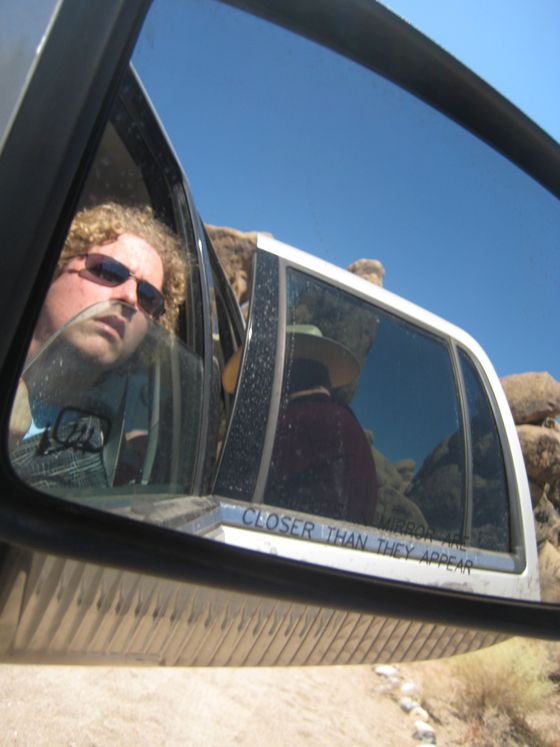
We drove back through the furnace of Death Valley that afternoon . . .
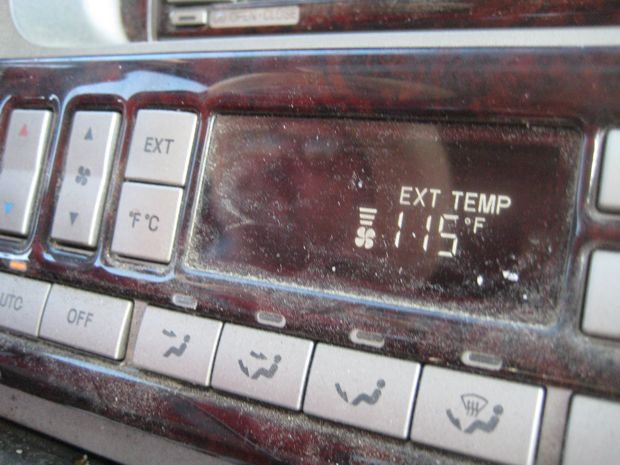
. . . and sped straight to the In-N-Out Burger for sustenance. That night, inspired by the grand Western landscapes of Lone Pine, Harry watched Jean Renoir's La Règle du Jeu for the first time.

Thank you for printing a picture of the white plastic rearing horse above the store. I love him. I saw him in Lone Pine many years ago and he sealed my love for the town. My husband and I stood there in the dust– somewhere near a post office– and he said, “But where would I work?” And that was a good point.
And then a lovely middle-aged woman who looked so dignified and loaded came along. She smiled at me and said hello and mailed her letter. I was pleased, thinking, “well where does she work?? There must be an answer.” .
We didn’t move there but tonight I thought of the town, how cosy it was and how nice everybody was there, and excited at how it had snowed on the mountaintops the night before. I wondered if it was all true as I remembered and if that horse was real. And there he is– Frosty.
Hey, Lynn — I think of the town often, too, and would love to get back there, especially since I learned after my visit that it’s the last resting place of one of my favorite actresses:
http://www.mardecortesbaja.com/2012/02/05/where-barbara-went/
Thank you so much for the beautiful pictures of Lone Pine. I worked at Lloyds of Lone Pine as one of my first jobs and absolutely miss “Frosty”! Alabama Hills have been my jungle gym as a child. That was at least 20 years ago and how I yearn to return and show my family my old stomping grounds!
Still there — still beautiful!